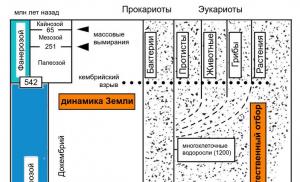A trip to southern England in May. The coast of England with beaches and the Titanic Museum Delve into history
Day 1. Southampton
Check-in on the boat, introductions, instructions, sightseeing.
Southampton is a city on the south coast of Great Britain, in the county of Hampshire. Located at the confluence of the rivers Itchen and Test on the shores of the Solent. The city arose on the site of the ancient Roman settlement Clausentum, known since 43. In the Middle Ages, Southampton became one of the leading ports of the Kingdom of England. Wool and leather were exported from here, and wine was imported in return.
On April 10, 1912, the Titanic set sail from Southampton on its first and last voyage.

We will have the opportunity to visit the beautiful Kalshot Castle. It was built in the 17th century and was used to protect the city's harbour. The ancient castle was used as a military facility until 1956; at the beginning of the 20th century, it housed a British Air Force base. Today, the entire territory of the castle is available for excursions; its visitors can see some of the military structures and weapons preserved here.

An interesting attraction is the old city gate Bargate. Built in the 1180s, these north gate were part of the fortress walls that surrounded the city, and cargo passed through them, which were then delivered to the port of Southampton. They still have drum towers from the 13th century and heraldic carvings with ornaments dating back to the 17th century. For a long time, the upper room on the second floor was used as the city hall.
.jpg)
Day 2. Transfer to Lymington
Located in the south of England, Lymington is an excellent sailing holiday center in the UK. This city impresses with beautiful buildings that will not leave connoisseurs of ancient architectural masterpieces indifferent. The Old Town, which grew out of the waterfront area, has many cobblestone streets and Georgian houses. The New Forest National Park is located near the city.

Day 3. Transfer to Poole
Poole is a coastal town and seaport in Dorset, England. The population of Poole is about 155 thousand people. The number of native Britons here is higher than the national average - about 96%. People settled on the site of modern Poole 2500 years ago. There were settlements here of the Celts, then the Romans, then the Anglo-Saxons. The Anglo-Saxon village of Poole survived two major Viking invasions. The first mention of the city of Pula dates back to the 12th century, when the city began to turn into a busy port through which the wool trade took place. In the 16th-18th centuries it became one of the most important ports for trade with North America.
The tourist center of the city is the embankment with numerous historical buildings. Along the promenade there are seaside cafes, restaurants and beach huts.
A must-see place is Corfe Castle, near Poole. Today the ruins of the castle rise majestically on the coast. This is one of the most picturesque monuments in the south of England. The castle was built during the Norman conquest of Britain, after 1066. Today, visitors can see many exhibits and artefacts dating back to both the English and Norman eras. Corfe Castle also has an interactive exhibition detailing the history of the castle.
.jpg)
Day 4. Transfer to Yarmouth (Isle of Wight)
Yarmouth was first mentioned in written records in 991 during the reign of Æthelred the Unreasonable. Received the first charter giving the right to call itself a city in 1135.
Henry VIII built Yarmouth Castle in the city in 1547. It was part of the coastal defense line protecting the Isle of Wight from invasion. Two sides of the castle are adjacent to the sea, and the other two were protected by a moat. In the 17th century the moat was filled with earth and a new gate was built. The castle was used as a defensive structure until 1870. It was then handed over to the Coast Guard.

Off the west coast of the Isle of Wight, wind and sea have created a unique natural attraction - chalk cliffs. Three white pointed “Needles” up to 30 meters high in Alam Bay go out to sea. In the mid-20th century, the Isle of Wight and the Needles Rocks were designated an "Area of Outstanding Natural Beauty". They are also named one of the Seven Natural Wonders of Southern England. Reefs, fogs and storms caused many shipwrecks off these coasts until a lighthouse was built here. Now the chalk cliffs and the lighthouse are the hallmark of the island.

Day 5. Trek to Cowes
Cowes is a city in the north of the Isle of Wight, on the left bank of the Medina River at its confluence with the Solent, a popular yachting center in the UK, well known to all sailing connoisseurs, because it is here that the prestigious Cowes Week regatta is held. Every August, the town comes alive with participants in this sailing race.
The city has a lot of well-preserved ancient buildings, which today are architectural monuments. During the reign of Henry VIII in 1539, a fortress was built in the city, which became part of the coastal defense line protecting the island from invasion
.jpg)
Day 6. Transfer to Portsmuth
Portsmouth is a city in Hampshire on the shores of the Solent, separating England from the Isle of Wight. The bulk of the urban population is concentrated on Portsea Island.
The ancient Romans built a fortress on the northernmost edge of this bay, and a small port grew here during the Norman era. But this strategic location was only fully exploited during Tudor times, when Henry VII established the world's first dry dock here and made Portsmouth a royal dockyard.
The main attraction of Portsmouth is the Historic Shipyards, which cover an area of several hectares. Buildings from the 18th-19th centuries have been preserved here, including naval warehouses, docks, the Semaphore Bath, a rope warehouse, a police station, etc. Pearls of Historical Shipyards - 3 original ships: “Marie Rose” (XVI century, Tudor era), “H.M.S. Warrior" (built 1860) and "HMS Victory" - the flagship of Admiral Nelson. The Spinnaker Tower in the form of a triangular sail is a modern landmark of the city with a height of 170 meters. There are three observation decks located on it at different heights, from where you can enjoy a dizzying panorama of the sea and Portsmouth. Other attractions include Southsea Castle, built in the 16th century by Henry VIII and once part of the city fortifications, the Dickens House Museum, the Museum royal navy, the Anglican Cathedral of St. Thomas and the Catholic Cathedral of St. John, the Blue Reef Aquarium. Tourists and city residents love to stroll on the 6-kilometer-long Southsea Promenade. Cultural lovers will be interested to know that Portsmouth has three concert halls and twelve museums.
Day 7. Transfer to Hamble
On this day we will go to the starting point. On the way, if there is room, we will stop at Hamble for the night and take a walk through its cute streets.
Day 8. Departure
At 9:00 we leave the ship and depart for Southampton Airport.
Why Stonehenge is not the best attraction in England, where you can write a first-class detective novel, find traces of dinosaurs and drink ale while chatting with the locals, says Tatyana Tyukhay, who, while living in Plymouth, England, traveled through several small but very atmospheric cities in the south and south-west. west of the country.
Tatyana Tyukhay
And on the weekends I explored small towns on the coast. No ancient castles, royal residences or luxurious botanical gardens that others boast English cities, - only cozy galleries and souvenir shops, soulful pubs, the cries of seagulls and an atmosphere of complete relaxation, while the sea breeze ruffles your hair. All you need to know about the south of England is that it is comfortable and warm here. But first about Plymouth.




Plymouth
Plymouth is an industrial city with a population of 250 thousand, the second largest after Bristol in the southwest of England. Fish are processed in factories here, and there is a Royal Navy naval base just outside the town.
Plymouth's center was destroyed in the Second world war, so don’t be surprised by the gray concrete buildings. Walking around the city, you will never miss the white and red Smeaton Lighthouse and the town hall; you will definitely come to the old part of Plymouth - the stone-paved Barbican with galleries, boutiques and cafes, where you should definitely try fish & chips, popular in England. Perhaps you will end up at the factory where the legendary Plymouth gin is produced, or in an aquarium (the deepest in England) with 40 sharks.
“No ancient castles, royal residences or luxurious botanical gardens - only cozy galleries and soulful pubs, the cries of seagulls and an atmosphere of complete relaxation”
Plymouth offers a leisurely lifestyle. Go for evening jogs along the ocean shore or read thick books on a bench while the wind blows through your hair. In the summer you can try local food at food markets, and on Fridays you can listen to West Country stars on the lawn in the Royal William Yard area. And every year in August the Fireworks Championship takes place in Plymouth - the best pyrotechnic teams come from all over the country.



St Ives
You can go to St Ives in the south of England for inspiration. The town has become famous for its huge number of artists, and there are art galleries at literally every step. And also shops where you can spend all your money on handmade souvenirs.
There are four beaches with perfect golden sand that attracts sunbathing and water sports enthusiasts. You can wander aimlessly for hours, chatting with locals about everything in the world (after all, the British are famous for their small talks with strangers) and petting strange but affectionate dogs.
It's amazing how a former fishing village has become a popular resort. The British began to travel here in droves back in the mid-19th century, and the railway appeared. Therefore, you can drive to St. Ives from a direct route, there are only two “buts”: long and expensive. By the way, in 2007, the British publication The Guardian named St. Ives the best English seaside resort. One of the episodes of “Pirates of the Caribbean” was filmed here.
“There are four beaches with perfect golden sand: you can wander aimlessly for hours.”
Traveling even further south, 30km from St Ives is The Minack Theatre, an unusual open-air theater in the cliffs. Back in 1932, Shakespeare's play "The Tempest" was staged here. They are not afraid of the cold here: performances take place both at the end of October and just before Christmas.




Jurassic Coast
For those tired of noisy cities, there is a direct road to the Jurassic Coast. It's a 155-kilometre coastline that stretches from the small port town of Exmouth to the beach village of Studland and holds 185 million years of history. No joke: here on the rocks there are imprints of the Mesozoic era (that’s why the coast is called the Jurassic), scientists constantly find dinosaur bones and other fossils (for those interested, in the town of Dorchester there is a museum whose collection includes a pliosaur with a two-meter jaw), and geology students come here for practice. This is the only one in England natural object UNESCO World Heritage Site. And it will certainly leave more impressions than the much-hyped Stonehenge.
“It’s okay to sell homemade chicken eggs and zucchini in a pub!”
We covered all 155 km of the route in exactly one day. The further west the coast, the older the rocks. There are several popular viewing points along the way, offering stunning views of the bizarre fossils and the incredible beauty of the blue-green expanse of water. The Durdle Door limestone rock arch is number one to visit. A few kilometers away is the picturesque Mupe Bay. No less charming is Lulworth Cove, a circle-shaped bay connected to the sea by a narrow strait. But we never saw the white cliffs of Old Harry Rocks: they are not visible from the shore, and we arrived in a storm when the ships were not leaving.
Along the Jurassic Coast there are places to stay overnight, restaurants with delicious steak, souvenir shops, and atmospheric pubs. In one of the pubs they easily made us coffee, which was not on the menu, and served it in cups from “grandmother’s” set. They also sold zucchini for the ridiculous price of 50p because it's normal to sell homemade chicken eggs and zucchini in a pub! The British have come up with a walking route along the Jurassic Coast, they write: you can walk it in 30 days. I'm sure I'll come back someday and cover these 155 km in trekking boots.


Torquay
Due to its very mild climate, Torquay is called the English Riviera. There are more than 60 sunny days a year, and Torquay was a fashionable English resort back in the 19th century. 35 km of coastline with palm trees, pines, cypresses - what else is needed to walk, forgetting about everything in the world. Sea, sails and boats - this is about life in Torquay. The city is built on seven hills, so there are many beautiful panoramas here.
This city was also created for writing the best detective novels: Agatha Christie spent most of her life here. Fans of her work can visit the city museum.
What else is there to do in Torquay? Go to Babbacombe Model Village - a miniature village with tiny houses, boats and trains: 413 buildings in total. Or look at Torquay from the local Ferris wheel. And we just walked around, drank ale in pubs, chatted with the locals, and shooed away the seagulls that had become so impudent that they had learned to snatch food out of our hands.


Photo - Tatyana Tyukhay
Countries:We present to your attention the regions and the most major cities England.
England
The largest historical and administrative country in Northern Ireland, it occupies the south-eastern part of the large island of Great Britain. The population of England makes up 83% of the total population of Great Britain. England currently consists of 9 regions and 48 ceremonial counties. The territory area is 133,396 km². Population 53,012,456 people.
Greater London (London)
An administrative unit in England, commonly also known as London. Consists of 32 districts (London boroughs) and the City of London. The smallest region in England by area, it covers an area of 1,572 km² and is bordered in the north by the East Anglia region and in the south by the South East Anglia region. Greater London is home to 8,308,400 people (second largest among regions), with an average population density of 5,285.24 people/km².
South East England
One of nine official regions in the south of England. Includes nine ceremonial counties, as well as several dozen unitary and municipal districts. Area 19,096 km². Population 8,724,700 people.
Cities:
- Guildford - a city in southern England with a population of 125,000 people, the administrative center of the county of Surrey.
- Oxford - a city in Great Britain, the capital of Oxfordshire. Known for being the oldest in English-speaking countries and one of the oldest in Europe educational institutions- Oxford University. Population 153,900 people.
- Brighton - a city on the south coast of England in the county of East Sussex, on the shores of the English Channel. Administratively united with the neighboring city of Hove, they are essentially one city. Population 155,919 people.
- Portsmouth - a town and unitary unit in the British ceremonial county of Hampshire on the shores of the Solent, separating England from the Isle of Wight. The bulk of the urban population is concentrated on Portsea Island. One of the main bases of the British Navy has long been located here. The population is about 200 thousand people.
- Reading - a town in England, carved out as a unitary unit in the central part of the ceremonial county of Berkshire. The city stands on the River Kennet, a tributary of the Thames. Population 143,096 people.
- Southampton - a port city and unitary unit on the south coast of Great Britain, in the ceremonial county of Hampshire in England, on the shores of the Solent Strait. Population 222 thousand inhabitants.
Region in the south of England. Includes seven ceremonial counties and eight unitary administrative divisions.
Cities:
- Bristol - city in England, a unitary unit with the status of "city" and ceremonial county, a port in South-West England in Great Britain, on the River Avon, near its confluence with Bristol Bay of the Atlantic Ocean. Population 416,400 people.
- Plymouth - a city in England, allocated as a unitary unit with the status of "city", in the southwest of the ceremonial county of Devon. Population 246,100 people.
- Swindon - a town in the English ceremonial county of Wiltshire in southwest England, the administrative center of the unitary unit of Swindon. Residents - 155,432.
- Cheltenham - a large resort town and baroque in Gloucestershire, England, near Gloucester and Cirencester. Population - 115,600 people.
- Exeter - the main city of the English county of Devonshire, on the navigable River Exe, 15 km above its confluence with the English Channel. Residents 119,600.
Region in the west of England. Area 13,004 km², population 5,642,600 people.
Cities:
- Birmingham - a city in England, allocated as a separate area with the status of “city”, in the center of the ceremonial and metropolitan county of the West Midlands. The city is the center of the West Midlands region and the second most populous city in England after London with a population of 1 million people.
- Coventry - a city in the east of the English county of West Midlands. Population 316,900 people.
- Shrewsbury - a city in England, the main city of the county of Shropshire, on the navigable river Severn. The second largest city in the ceremonial county of Shropshire. Population 70,689 people.
- Telford - a city in Great Britain, the largest settlement in the English ceremonial county of Shropshire, the center of the unitary unit of Telford and Wrekin. Population 162,300 people.
- Stoke-on-Trent - a town and unitary unit in England, in the ceremonial county of Staffordshire.
Population - 238.3 thousand inhabitants. - Wolverhampton - a city in England, allocated as a separate area with the status of “city”, in the north-west of the ceremonial and metropolitan county of the West Midlands. Population 249,900 people.
Region in the west of England. Includes five ceremonial counties, as well as several unitary and municipal districts. Area 14,165 km². Population 7,084,300 people.
Cities:
- Liverpool - a city in the UK, in the county of Merseyside, a port on the north-west coast of England, at the mouth of the Mersey River. Population - 441,477 people - the fifth largest city in the UK (and third in England).
- Manchester - a town and council area in North West England, Greater Manchester. The city of less than half a million has the largest agglomeration in the region with a population of 2.2 million, Greater Manchester. The ninth largest city in Great Britain (and the eighth in England).
- Blackpool - a town and unitary unit in the ceremonial county of Lancashire in the region of North West England, on the coast of the Irish Sea. Population - about 143 thousand people.
- Preston - a city in England, allocated as a separate area with the status of “city”, the administrative center of the county of Lancashire, located near the Ribble River. Population 131.3 thousand people.
Region in the north of England. Includes four ceremonial counties, as well as several unitary and municipal districts. Area 8,592 km². Population 2,602,300 people.
Cities:
- Newcastle upon Tyne - an industrial city on the north-east coast of Great Britain, in England, in the county of Tyne and Wear. Situated along the north bank of the River Tyne, it was formerly the county seat of Northumberland. Population 269,500 people.
- Darlington - a town in the UK southwest of Middlesbrough. Located on the Skern River. Population - 97,838 people.
- York - one of the most important cities in England, the main city and unitary administrative unit with the status of "city" in the south-eastern part of the ceremonial county of North Yorkshire. Population 184,900 people.
- Newcastle - an industrial city on the north-east coast of Great Britain, in England, in the county of Tyne and Wear. Situated along the north bank of the River Tyne. Population 269,500 people.
Region in the east of England. Includes nine ceremonial counties, as well as several dozen unitary and municipal districts. Area 15,420 km², population 5,316,700 people.
Cities:
- Leeds - a city in Yorkshire, on the River Aire; UK's fifth largest city; With 443,247 residents living within the city limits, the total number of residents in the West Yorkshire conurbation is over two million.
- Sheffield - a city in England, in the county of South Yorkshire. Located in northern England on the River Sheaf. One of eight regional centers that form the group of main cities in England. Population 534,500 people.
- Bradford - a city in England, in the county of West Yorkshire. It is located 14 kilometers west of Leeds, and 26 kilometers north-west of Wakefield. Population 293,277 people.
- Wakefield - a city in England, the administrative center of the county of West Yorkshire. Population - 76,866 people.
- Kingston upon Hull - a town and unitary unit in England, in the ceremonial county of the East Riding of Yorkshire. Population - 243,589 people, with an average population density of 3,409 people/km².
Region in the east of England. The area of the region is 15,627 km²; population - approximately 4,567,700 people.
Cities:
- Leicester - a city and unitary unit in Great Britain, the administrative center of the county of Leicestershire. Population 285 thousand people.
- Nottingham - town and unitary unit in Great Britain, in the ceremonial county of Nottinghamshire (England). Situated on the River Trent. Population - 273,863 people.
- Lincoln - a city in eastern England, the administrative center of Lincolnshire in the East Midlands region. Population 93,500 people.
- Derby - a city in England, allocated as a unitary unit with the status of "city" in the southern part of the ceremonial county of Derbyshire. Population 236,300 people.
- Northampton - a city in Great Britain, the administrative center of the English county of Northamptonshire. Population - 195 thousand people.
Region in the east of England. Includes six ceremonial counties, as well as several unitary and municipal districts. Population 5,907,300 people. Area 19,120 km².
Cities:
- Cambridge - a city in the east of England, the administrative center of the county, allocated to a separate area with the status of “city” in the southern part of the non-metropolitan county of Cambridgeshire, one of the oldest university centers in Europe. The city is home to one of the best universities in the world. Population 123,900 people.
- Luton - a town of blacks in England, carved out as a unitary unit, in the southern part of the ceremonial county of Bedfordshire. Population 184,900 people.
- Peterborough - an industrial town and unitary unit in England, in the ceremonial county of Cambridgeshire, 120 km north of London, on the River Nin. The population exceeds 160 thousand people.
- St Albans - a city in the southern part of the English county of Hertfordshire, 35.5 km north of London on the River Ver. Population 129 thousand inhabitants.
- Colchester - a city and district of the same name in the English county of Essex, on the Colne River, on the top of a hill, on which the walls of the Roman city of Camulodunum and the remains of ancient buildings are still preserved. It is considered the oldest city in the British Isles.
- Basildon - town in Essex, England. The center of the district of the same name in a non-metropolitan county. Population - 169,822 people.
- Ipswich - a city and port in eastern England, located in the estuary of the River Orwell, which flows into the North Sea. Located approximately 80 miles from London. The administrative center of Suffolk County. The population is estimated at 118 thousand people.
- Southend-on-Sea - town and unitary unit in the south of the ceremonial county of Essex. Population 159.3 thousand people.
- Chelmsford - the city and district of the same name with the status of “city” in England, the administrative center of the ceremonial non-metropolitan county of Essex, is located northeast of London. Population 169,500 people.
- Norwich - capital city of Norfolk. Located approximately 160 km northeast of London, on the Wensham River just above its confluence with the Hyeres. Population: 129,500 inhabitants.
Natalya Glukhova
The coast of England with beaches and the Titanic Museum
24/01 2018
Hello friends!
Travelers who know even a little geography probably imagine that Great Britain is surrounded on all sides by the sea. Where else is it good to develop shipbuilding and admire the beautiful views of the English sea.
All this goes deep into the past, and has left a great legacy to the country, for which thousands of tourists visit the kingdom every year. For those who are interested in the navy, famous ships of captains, or just like to lie on the beach listening to the cries of seagulls, today I will tell you about the coast of England.
From this article you will learn:
Where do hippies still live?
If you find yourself in the south of England, then the city on the south coast that will definitely interest you is Brighton. Not to be confused with the US coast! Even the people of Great Britain say that Brighton is unusual. When you get here, you will immediately feel the spirit of freedom: Englishmen strolling carefree along the sunny streets, people with a variety of hair colors and tattoos, many of them far from young.
How can you not feel freedom when such a beautiful view of the wide sea opens up in front of you - one of the most important attractions of England. The rocky beach and steep waves are a favorite spot for tourists and locals. There is also a pier along which you can walk, sit in a cafe and ride on attractions from children's horses to scary roller coasters.
Brighton Pier
Be sure to take a walk along the shore to Brighton Marina - this is a harbor with even more picturesque views. If you're not a fan of walking, you can take a ride on the small railway for about £7.
Having explored the entire sea part, you will wonder what is in other places. Even the palace here was built in a completely atypical style. It's called Brighton Pavilion. Built for King George IV as a seaside holiday home, it holds much history and attracts with its unusual Sino-Indian style.
“Why suddenly in this style?” - you ask. Once the artist William Alexander visited China. The visit was actually diplomatic and was not successful, but the artist managed to sketch more than two thousand sketches of the country, which he then published in his book, which became popular in Great Britain. The paintings reveal the architecture, life and culture of China. Some details of the castle's interior were copied from the book.
Brighton Pavilion
The streets of Brighton will also attract your attention - Brighton lanes. The narrow streets hide interesting shops with souvenirs or retro items, many of them are charitable.
The spirit of freedom is also manifested here in relation to people of non-traditional orientation. They are supported in every possible way and parades are organized in their honor, where tourists who have nothing to do with this problem like to have fun. They are attracted by the atmosphere of fun - everyone is dressed in funny costumes, happily walking around and listening to music.
A city with a tragic history
What sad thing that happened once in the UK do you remember? The sinking of the Titanic must be on the minds of many. Here I will tell you about the place from which the ship departed - Southampton. In this place there is a port from which ships of the most privileged companies in the country sail.
If you want to learn more about the history of the Titanic, visit the Sea Side museum. In addition, here you will learn the stories of people who have been engaged in shipbuilding for centuries. The interactive museum will be interesting for both children and adults. And the entrance ticket also allows you to visit Tudor House and Garden. Contains a history of more than 900 years. Both rich and poor, famous and ordinary people lived in the house.
With the help of a free audio guide, you will learn about the lives of former residents and immerse yourself in the culture and life of different eras. The gardens located around the house will leave the most picturesque photos on your devices.
If you still haven’t satisfied your interest in the topic of the Titanic, then download the Titanic Map trail onto your phone and, guided by it, walk yourself through the places associated with the ship and the people involved in it.
Maritime Museum
Island on an island
To complete your trip to the south in full, I advise you to take a ferry from Southampton to the Isle of Wight. The largest island in Great Britain is located in the English Channel.
It will be attractive to lovers of picturesque landscapes and sunsets by the sea. The Needles Landmark Attraction is a zip line that takes you to the beach and sand bluffs. Don't forget to bring along a traditional British dish. It is on the coast that the British love to taste it most.
In this same part of the island there are many other attractions for tourists. 4D cinema, Alum Bay Glass - a place where handmade glass is produced. Here you can not only buy souvenirs, but also watch how craftsmen produce them. And in the IW Sweet manufactory (IW confectionery factory) you will learn how to produce sweets that have no analogues anywhere else.
In addition, people from different countries, in order to visit festivals - a wide variety: from music to those dedicated to food (for example, the garlic festival). The most famous of them is called the Isle of White Festival, where world-famous musicians perform: Oasis, Radiohead and many others. Also famous with the green man takes place in Scotland in the city of Edinburgh.
Isle of Wight The Needles Landmark Attraction
Go deeper into history
Over time, it has developed that the people of Southampton do not like Portsmouth. And it's mutual. The fact is that the British are fierce football fans, and both of these places have their own football team. Competition spoiled their relationship.
What else is Portsmouth famous for? Those who are fascinated by ships will find themselves here. The Portsmouth Historic Dockyard not only contains a large number of interesting exhibitions on various maritime topics, such as Women and the Navy, but also real ships from the past - Henry VIII's Mary Rose, Admiral's ships Nelson and the only surviving World War II HMS Alliance. About 14 vessels are open to the public.
Historic Dockyard
You can see the Spinnaker tower from everywhere in Portsmouth. A point that reveals the city from a bird's eye view. On the floor at a height of 100 meters there is a floor, part of which is made of glass. The bravest tourists admire Portsmouth under their feet.
An evening walk along old Portsmouth will impress you beautiful views on the sea, an ancient stone embankment and chapels. In case you were wondering, there are many water canals in the UK, and there are more canals than Venice.
Northern equivalent of Brighton
The cities on the north coast of England are in no way inferior to the south. Blackpool is very reminiscent of Brighton. There are also piers with attractions and a Ferris wheel spinning near the water. As in Portsmouth, there is a tower with a glass floor. But what distinguishes Blackpool from others is, for example, the Comedy Carpet. This is a large part of the asphalt, covered with jokes from famous comedians and stand-up artists.
The tram will take you to the village of Fleetwood, located on the very edge of Blackpool. It has everything a tourist needs: outlet stores featuring famous brands with big discounts, restaurants, a harbor and a beach. Not far from it you will find a monument dedicated to the families of sailors. He salutes the women who waited for their husbands from long trips.
Contemporary art is presented in the city center: unusual buildings in the form of arches, as in the photographs:
Iron arches with lanterns
Sculpture in the city center
The Gundy Art Gallery regularly presents a variety of exhibitions, but the main part with photographs of a variety of people relaxing on the beach with their families, dogs or in splendid isolation remains unchanged.
Stanley Park is no worse than the huge London parks: here you will be impressed by fountains and Italian gardens.
And don’t forget to go down to the beach near the pier in the evening to photograph the sunset: it’s especially beautiful here.
Sunset on the pier
Inspired by your excursion, do you want to plan another trip? Subscribe to the Viva Europe blog and read useful information about places in Europe worth visiting. Foreign languages you will also need them, you can also learn them using the blog, and you will also receive a phrasebook in three languages with Russian transcription as a gift.
You can read a tour of Oxford with the halls where Harry Potter walked.
And if you are already excited about a trip to England, you can look at tickets, hotels and car rentals on one website. You will be presented with all existing options for comparison, at prices without markup, and you can choose what suits you.
Subscribe to blog news. Find even more useful articles and rules, and you will also receive as a gift - a basic phrasebook in three languages, English, German and French. Its main advantage is that there is Russian transcription, therefore, even without knowing the language, you can easily master colloquial phrases.
(No ratings yet)
An independent trip to Southern England is a great opportunity to see the cities and attractions of the south of Great Britain in May.
Prices and options for an English trip
- WHEN -
- HOW TO GET THERE – there are several flights from our countries to London every day, operated by different airlines. Airports located in close proximity to London have international status. But you can get to the cities of Cotswold, Hampshire, Kent, Sussex either by car or by bus. The trip will take no more than two hours.
- TRANSFER - to London
- TRANSPORTATION – England has an excellent railway network, so feel free to choose a train to explore the city of interest to you. And for excursions, take a taxi or use the bus.
- WHERE WE WILL BE - London, Oxford, Sissinghest, Chartwell, Wiltshire, Exbury.
- EXCURSIONS - around London or England.
- WEATHER – despite the rather humid climate, in May Foggy Albion will delight you with positive temperatures in the area (12-14 degrees) and little precipitation.
- ACCOMMODATION AND CATERING – many hotels in London and its surrounding cities are available to guests of the island. Remember the rule: hotels located in the center will cost much more than hotels located further from the center. You also don’t have to look for cafes or restaurants – there are a lot of food outlets here to suit every taste. And, of course, lunch or dinner in provincial restaurants will cost much less than in fashionable establishments in London.
- DURATION – 10 days
British treasures
England is strong in its traditions like no other country in the world. Aristocratism and its inherent observance of thousand-year-old rules of life and way of life are strictly observed here.
The British treat ancient monuments with care, so each guest is given the opportunity to feel like a medieval lord while in an ancient castle. The majestic atmosphere of the Middle Ages is still preserved here. Many castles have acquired the status of hotels, and you can always stay here.
Legendary ghosts are an integral part of almost every English castle, which you will certainly be told about during the tour.
It is not for nothing that England is considered a “green” country: there are a huge number of well-kept parks and manicured landscapes that are stunning in their beauty, which impress with their rural landscapes. The picture is complemented by well-groomed trees and meadows, where you can even see a few cows.
The traditional times of the 19th century are today diluted with unusual specimens of flora, which makes them more attractive. Thanks to high craftsmanship, the lifespan of many British parks and garden landscape complexes is more than 150 years.
Luxury and British classics
 Tourists visiting England strive to fully experience the spirit and atmosphere of this ancient country, so they have castles converted into hotels and perfectly restored in which they can book a room. Everything here breathes the Middle Ages - luxurious draperies and antique furniture, rare engravings and paintings. An environment has been recreated in which each guest can imagine himself in the role of a real English lord or baronet!
Tourists visiting England strive to fully experience the spirit and atmosphere of this ancient country, so they have castles converted into hotels and perfectly restored in which they can book a room. Everything here breathes the Middle Ages - luxurious draperies and antique furniture, rare engravings and paintings. An environment has been recreated in which each guest can imagine himself in the role of a real English lord or baronet!
- Don't forget to take an umbrella with you on your trip - and then the capricious English weather will not take you by surprise.
- Avoid visiting castles during holidays and weekends - during these periods there are too many people wanting to see the sights of England.
- At least for one day, allow yourself to spend the night in an ancient castle - the impressions will amaze even the most inveterate skeptics!
Ten days in ancient estates
The southern part of England is famous for its large number of ancient palaces. Their focus is the cities of Kent, Sussex, Wiltshire, and Hampton. It is better to inspect them at the end of May - this is the time of year when they bloom large quantity flowers and trees.
Day 1-2 - London
 Choose London as your main city for accommodation: it will be more convenient to get to the most interesting sites from the capital of Great Britain. On arrival, immediately choose a walk or boat tour of Hampton Court's charming parks. On the second day you can go to Brentford: this is where the famous Syon House is located.
Choose London as your main city for accommodation: it will be more convenient to get to the most interesting sites from the capital of Great Britain. On arrival, immediately choose a walk or boat tour of Hampton Court's charming parks. On the second day you can go to Brentford: this is where the famous Syon House is located.
Day 3-5 - Oxford
 Afterwards we drive to Oxford, and then go to Blenheim Palace and be sure to stop by the vicinity of Broughton Castle. Don't forget to visit Barnsley House and Hyde Cote Manor with their magnificent old rose gardens.
Afterwards we drive to Oxford, and then go to Blenheim Palace and be sure to stop by the vicinity of Broughton Castle. Don't forget to visit Barnsley House and Hyde Cote Manor with their magnificent old rose gardens.
Day 6-8 - Wiltshire, Exbury
 Those who prefer to explore rural mansions in detail should visit Wiltshire. This is where the striking 18th century Longleaf House and Stourhead palaces are located. Lovers of green parks and shady alleys are recommended to visit the New Forest in Exbury - there are luxurious park estates.
Those who prefer to explore rural mansions in detail should visit Wiltshire. This is where the striking 18th century Longleaf House and Stourhead palaces are located. Lovers of green parks and shady alleys are recommended to visit the New Forest in Exbury - there are luxurious park estates.
Day 9-10 - Sissinghest, Chartwell
 At the end of your trip, don't forget to visit the famous 18th-century Petworth House, surrounded by a huge park. And also go to Sissinghest - a recognized world standard of park art. It is convenient to return to London by passing through Chartwell - this is the former estate of Sir Winston Churchill.
At the end of your trip, don't forget to visit the famous 18th-century Petworth House, surrounded by a huge park. And also go to Sissinghest - a recognized world standard of park art. It is convenient to return to London by passing through Chartwell - this is the former estate of Sir Winston Churchill.
This concludes our unusual trip through Southern England with its prim old castles and bright gardens.
New adventures!














